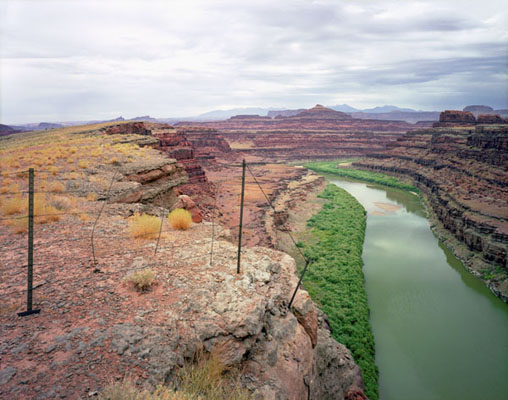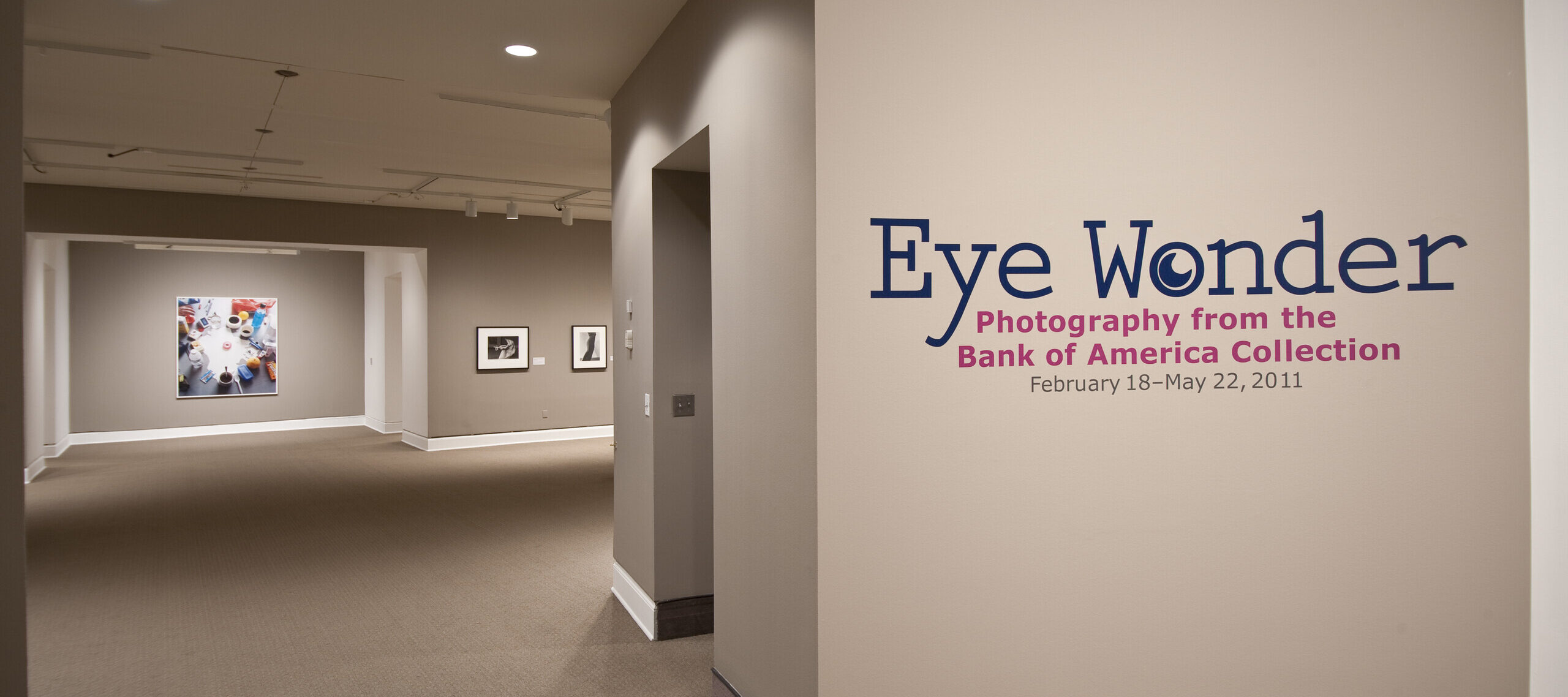Karen Halverson (American, b. 1941) creates large format color landscape photographs. She spent several decades documenting the American West, traveling throughout the country capturing the intersection of the natural and manmade world. The Beinecke Rare Book and Manuscript Library at Yale University recently acquired a substantial archive of her photographs for their Western Americana Division. Two works from Halverson’s “Mulholland” portfolio are on view in Eye Wonder: Photography from the Bank of America Collection. The artist discussed her process and inspirations with NMWA Editor Vivian Djen.

VD: You grew up on the East Coast (in Syracuse, New York), moved West, and have now come back East. How have your travels and experiences across the country shaped your aesthetic? What do you think is the most significant difference visually between the coasts?
KH: An early childhood trip West must have affected me deeply. At the first chance I got after that, namely, to go to college, I went West again. As a young adult, I lived in New York City but started going West annually to photograph beginning in 1984. I lived in LA from 1991 to 2006 when I moved back East to be closer to my daughters and their families. The most striking difference, visually, between the East and the West are that the East is generally flatter, greener, and more heavily forested. The West is characterized by a series of north-south running mountain ranges and arid basins. It is more arid, hence more brown than green. In the West, one can see great distances without visual obstruction.
VD: Mulholland is a 52-mile road extending from the Pacific Ocean to Hollywood, following the ridgeline of the Santa Monica Mountains and offering captivating views of the Los Angeles basin and San Fernando Valley. Songs, movies, and books have been created about the road. What is it about Mulholland that attracts you?
KH: My first exposure to Mulholland Drive was with David Hockney’s painting Mulholland: The Road to the Studio, 1980, which I saw at the Met in New York shortly before I moved to Los Angeles. Soon after moving, I came upon Mulholland and decided to follow it. The winding road itself is seductive and the views can be spectacular when the air is clear. I was also attracted by the drama of a rugged mountain ridge running through a major metropolis, a dense urban settlement set amidst lush vegetation, both native and imported. Mulholland seemed to me to speak of issues of nature and culture.
VD: Why did you choose the panorama format for the portfolio?
KH: Intuitively the panorama felt right because of the broad vistas Mulholland affords. Also, because it was a new format for me, it shook up my sensibilities in a good way, made me see afresh.
VD: The Mulholland photos include both natural and manmade elements—power lines, street poles, and fences cutting through the lush flowers and dry brush. How did you choose what to photograph? Are you trying to say that man and nature can coexist peacefully? Or is it man versus nature?

KH: I drove Mulholland hundreds of times, at all seasons, and over the course of three years. I had long been interested in the human presence in the western landscape so my approach with Mulholland was a continuation of that theme, but for the first time in an urban environment. I was definitely on the lookout for cultural artifacts in the landscape, both things like power lines that we’re meant to overlook and things like “landscaping” that we’re meant to see and admire. As an Easterner, I was greatly attracted to the dramatic and exotic vegetation along Mulholland and the shocking intensity of its color. To me, all the elements in and on the landscape have equal value in terms of suggesting how we live in a particular environment. The work isn’t overtly polemical and can’t be reduced to a simple statement about man and nature, we are part of nature. In Los Angeles, Mulholland offers a glimpse at both how we adapt the environment to our perceived needs and how the environment affects and partially determines our way of life.

VD: For the Mulholland and Colorado River portfolios you followed a specific route/landmark. How do you think this affects your process as opposed to other series where you are capturing a general area? How was photographing Mulholland and the Colorado River different?
KH: With Mulholland, I was, for the first time, following a specific path determined both by nature (the crest of the mountains) and by man (the road itself). After many years of wandering around the West with a camera, I found it very satisfying to have a specific and limited route I was investigating. Since Mulholland, I have preferred to have an itinerary or at least a specific theme that gives shape to any given project. The obvious difference between the Mulholland and the Colorado River projects is that Mulholland is 52 miles long and the Colorado River is 1700 miles long. The Green River, the primary upriver tributary that I felt compelled to include in the Colorado series, is another 700 miles long, that’s 2400 miles in all. Both the Mulholland and Colorado projects raised questions about water in the arid West, but the Colorado much more significantly and over a much broader area. The Colorado has played a crucial role in the development of the seven states for which it supplies water.
VD: There is only one photo at night in the Mulholland series, and most of your photos in your other series are also taken during the day. Why don’t you have more night shots?
KH: In my early work in the West during the 1980s, I frequently photographed at dusk and at night. It felt like a way of getting beyond the obvious. I often included lights from my and other people’s cars in the frame. But there is an obvious limitation to photographing at night, there’s limited visibility! I’m interested in conveying information and raising questions, stimulating thought. I’m leery of photographs that operate primarily on mood or emotion. That is why I seldom photograph at the golden hour. I have nothing against beauty and would like to think it is a factor in my work, but I don’t want my work to trade primarily or only on beauty.

VD: How long did it take you to shoot the entire portfolio? Is it complete? Do you think you will continue to photograph Mulholland?
KH: I photographed Mulholland from 1991 to 1993. In 2006, when I knew I was going to move East, I made a few images I knew I wanted to be part of the series. Even though I’m now living in the East, I intend to keep photographing the West and, in fact, have a project in mind for this coming summer. But I doubt that I will continue to photograph Mulholland. I’ve done that and need to move on to the great unknown. Every project is a learning experience.
